
A look back at the Swiss K31, probably the best service rifle ever made that never saw wide-scale combat use.
A great many rifles have passed through time never having truly been tested. Some of them were simply too far ahead of their time, and others a day late and a dollar short. Such is the case of the Swiss K31, arguably one of the finest military rifles ever made … and possibly the best bolt-action rifle to come out in the prewar era.
It’s too bad, however, that it was never used in its intended role, an example of notorious Swiss neutrality. The rifle is so well made and accurate that it has instead made a name for itself stateside as one of the go-to rifles for vintage military matches, but even then, it’s slowly becoming extinct on the firing line.
So, without further ado, let’s look at the rise and fall of the prince of service rifles.
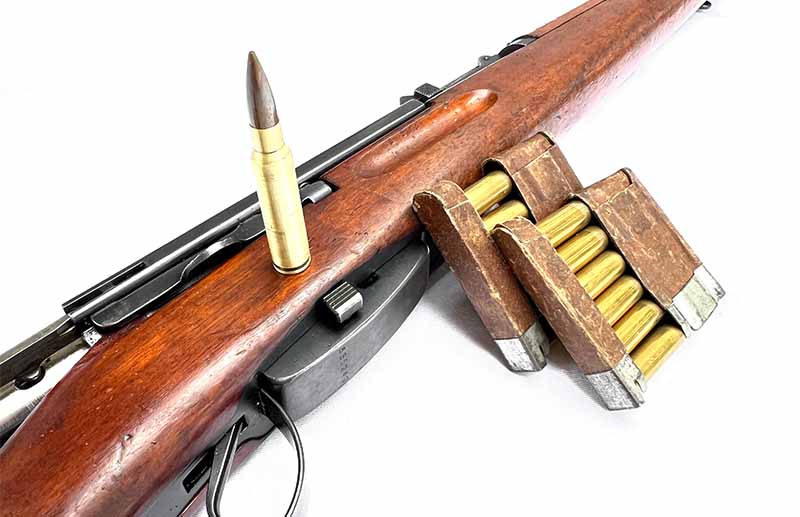
History Of The K31
The K31 Schmidt-Rubin Short Rifle (Karabiner Model 1931) is a very unique design that dates back to the blackpowder cartridge days. The original designs for the gun were adopted into service in 1889, just as Switzerland entered the era of smokeless powder. The original rifles were massive and had strange, elongated receivers fitted with 12-round magazines. The designers, Eduard Rubin and Rudolf Schmidt, came up with a complicated, oversized action that allowed a straight-pull method of operation. The rifle was ungainly, but chambered in a then-modern cartridge, the 7.5×53.5mm (which at the time was quite advanced).
There were shortcomings with the gun, namely its receiver. Not long after it was adopted, a newer, more robust design was developed that confusingly shared the same name. The Schmidt-Rubin 1889/96 rifle was a new design entirely and wasn’t parts-compatible with the original. The bolt design was different and much stronger. Nevertheless, this design also proved too ungainly and mounted troops settled for a foreign straight-pull Mannlicher chambered for the 7.5×53.5mm cartridge. The Mannlicher wasn’t loved, and a search began to replace it. Two additional Schmidt-Rubin rifles were made as stopgaps, the 1900 short rifle and later 1905 carbine, but they were not great guns and quickly discarded.
The next major evolution was the K11, a final evolution of the M1911 rifle and M1896/11 rifle. The gun was relatively compact, but still somewhat of a cumbersome piece to carry. The conversion had been made to the then-standard 7.5x55mm, and the ammunition featured spitzer bullets instead of round-nose projectiles. The K11 served for decades until trends again demanded shorter, more compact rifles for infantry. Schmidt and Rubin were long dead at this point, never having lived to see what would be the final model of their straight-pull action: the K31.
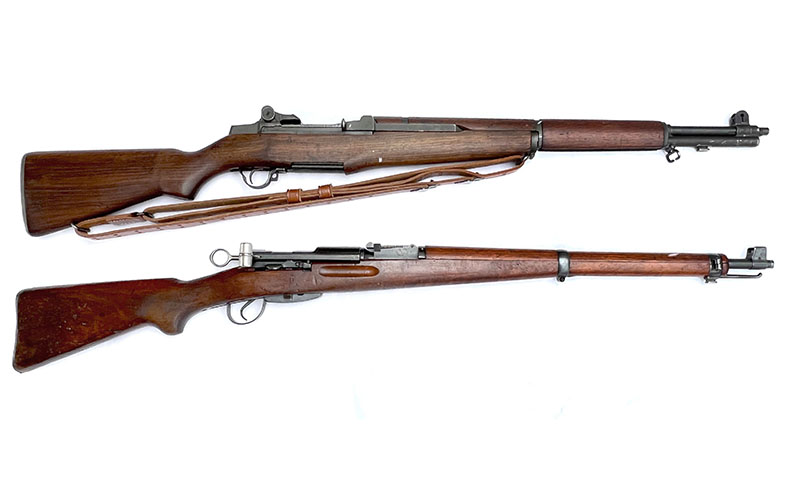
The K31 is a marvel of engineering. While the Schmidt-Rubin actions were never as compact as Mausers, Mosins or Enfields, they were the best finished and most mechanically interesting. The end result of all the years of trial and error led to a rifle that was, at the time, one of the most accurate ever issued to an entire army. The 7.5x55mm was a powerful chambering and, combined with the K31, gave the individual Swiss militiaman or soldier a dominating advantage in mountainous terrain. The K31 went on to replace every other rifle in Swiss service and was also used by the Swiss Guard at the Vatican. It served until the late 1950s and continues to be a popular civilian rifle in both Switzerland and, to a lesser extent, in America.
Why Was It Never Used In Warfare?
There’s a simple answer as to why this otherwise fantastic rifle was not used in warfare, despite being quite superior to many others at the time: Switzerland was a neutral country and also didn’t make a habit of exporting their rifles. I’ve searched high and low and can’t find an instance of a K31 being used in combat. I’ve heard from gun show and range lore that the guns were in fact used to protect the Swiss border and some may have made it up to fight the Russians on behalf of Finland, but this is largely unsubstantiated.
The political landscape of Europe at the time would have not strongly benefited Switzerland in terms of picking a side since they had been neutral for so long. The Nazis didn’t particularly care for them, but had loose alliances with other neutral countries at the same time, such as Sweden, notorious for allowing German trade and movement while at the same time staying out of things.
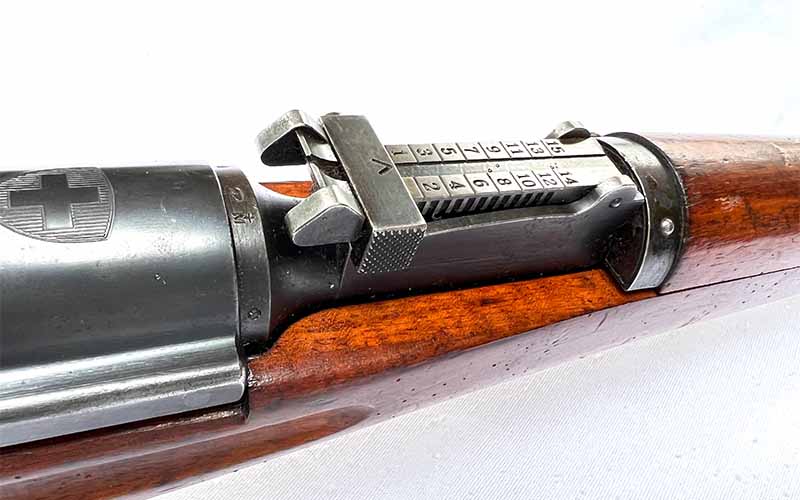
The idea that Swiss border guards actually fought the Nazis is dubious at best; however, it isn’t a stretch to believe these rifles were used against various destabilizing elements, such as foreign Bolsheviks trying to enter the country like they had done in other ones. We will probably never know, but there isn’t a single documented case of the K31 in combat that I could find, and unless there’s a substantial release of documents from the time period (again doubtful), the K31 will remain the best military rifle that never saw action.
Straight-Pull Action
Straight-pull actions are a bit of a funny thing. They have a number of distinct advantages over a standard bolt action, but they also lack in certain areas. One of the first major reasons that people began designing straight-pull actions was the idea they were faster. It could be argued that this is true, but speed is a very relative concept when you’re talking about manually operated rifles.
The king of speed in bolt actions is without a doubt the British Enfield. The bolt just simply glides back and forth, and you’re right on target with almost no effort. The downside of the Enfield action is that it’s relatively weak by comparison to the Mauser. Mauser rifles have dominated the bolt-action scene since they were first invented. The Mauser is, without a doubt, the strongest type of bolt action and virtually every common rifle we have today—such as the Model 70 and Remington 700—are direct descendants of the Mauser.
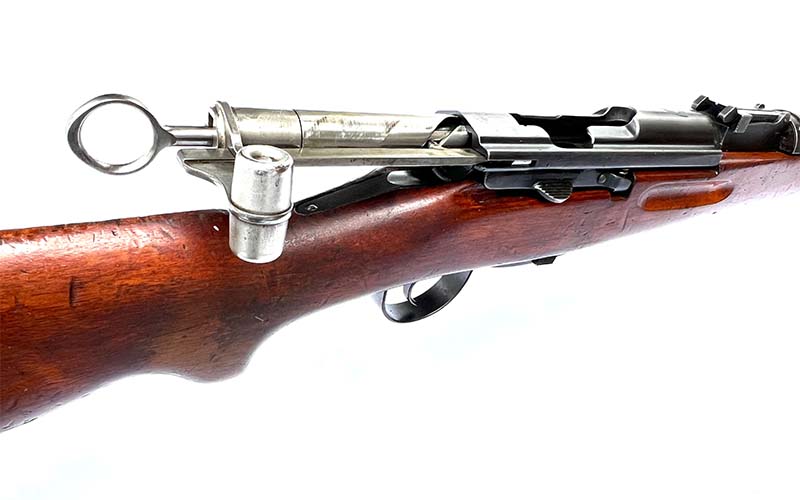
With training, you can work a Mauser bolt pretty quickly. Unfortunately, Mauser rifles typically came with a 5-round fixed box magazine. It’s lost on me why the Germans decided to go through two World Wars with this as a main feature, considering it wouldn’t have taken much effort to either extend the magazine box or replace the floor plate and trigger guard unit with a detachable magazine box common to other German rifles at the time, such as the FG42.
The K31 action is very fast when it’s working properly. The downside of it is that it requires a great degree of physical strength to operate quickly. There’s no camming action provided when the bolt is open: You must rip it straight backward, and run it home as hard as you can forward. It’s almost like a semi-auto action with no gas system. If you have an over-pressured case, it’s very difficult to get the action to open.
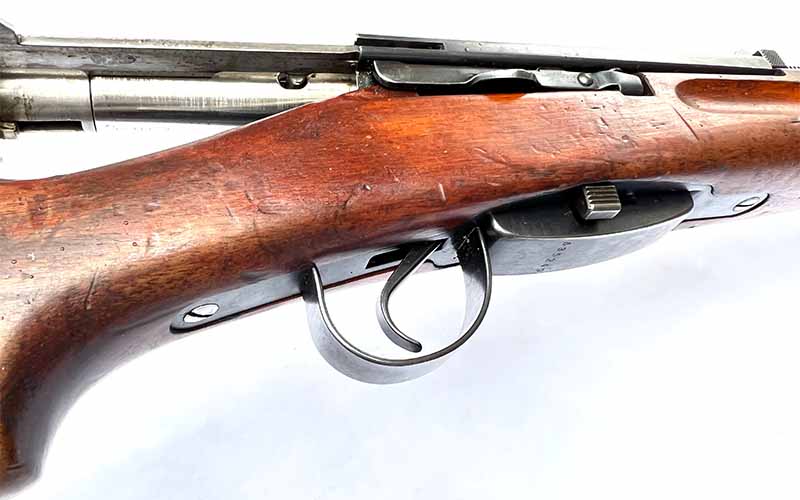
If there’s one thing that this rifle is, it’s accurate. The trigger is a two-stage job that’s truly exceptional for not just a military rifle, but for a rifle in general. The trigger breaks clean, and it’s simply a joy to use. The great thing about these guns is that most of them are going to be able to shoot match accurate right from the get-go. If you want to get started in CMP matches or other types of military competition, this is a great option. The average K31 that I’ve fired over the years produces five-shot groups from the bench of around 2 inches. You can expect the gun to hold 4 inches at 200 yards.
The 7.5×55 Cartridge
There have been a number of cartridges designed and used in the K31 family. The principal cartridge of interest is dubbed the GP11. This is a 174-grain bullet that’s fired at roughly 2,550 fps. The cartridge is widely regarded for its accuracy, though unfortunately you’ll have a heck of a time trying to find it today. The surplus market 15 years ago, however, was chock full of the stuff, and you could get very high-quality, Swiss-made ammo for relatively cheap.
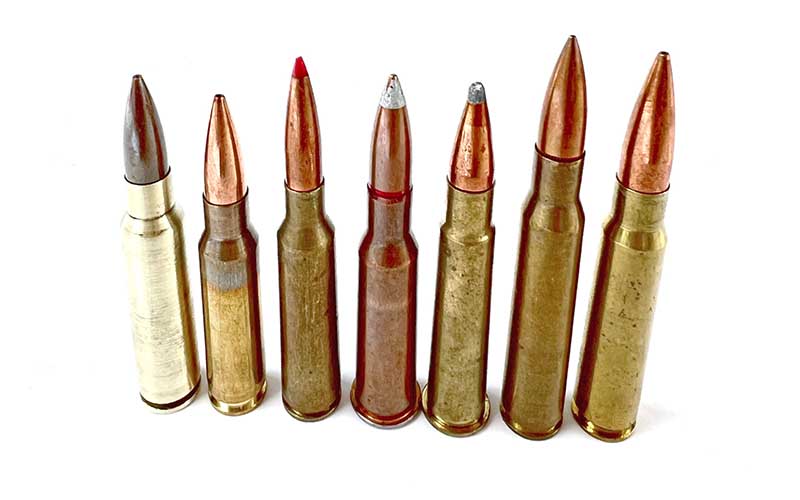
This cartridge was nearly identical to .308 Winchester/7.62 NATO. The ballistics are essentially the same; each has some minor advantages over the other. The 7.5 Swiss case has slightly more capacity, and the 7.62 NATO has a slightly shorter overall length. For all realistic uses, they’re virtually identical in 174- and 175-grain weights.
There are still a couple places that make factory-loaded 7.5 Swiss. It’s becoming increasingly hard to find the ammunition today; only two retailers had it in stock nationwide at the time of this writing. There is, of course, the oddball places that stock these sorts of things. In the past, I had good luck at Dunham’s Sports in the Midwest. They typically have some oddball calibers sitting on the shelf from time to time. If you can find it, Prvi Partizan 174-grain FMJ (GP11 clone) rounds are about $29 for a box of 20.
Brass is also getting slightly hard to find. Unfortunately, the rim diameter is not the same as .308 Winchester, and you can’t make 7.5 Swiss from other common cartridges. That said, the 7.5 Swiss uses .308 diameter bullets, making your selection process pretty easy. It can also use most of the same powders that you would use for .308 Winchester or .30-06 Springfield.
My own match load recipe (try at your own risk) was a 168-grain Hornady BTHP over 41 grains of Hodgdon Varget. The brass was always full-length resized to account for the tight chamber dimensions. I loaded them to 2.890 inches OAL in PPU brass with CCI standard large rifle primers. I shot thousands of this load alongside my dad for years of CMP competition. I shot my first CMP gold with this load, in fact. Now … if only I could find some Varget.
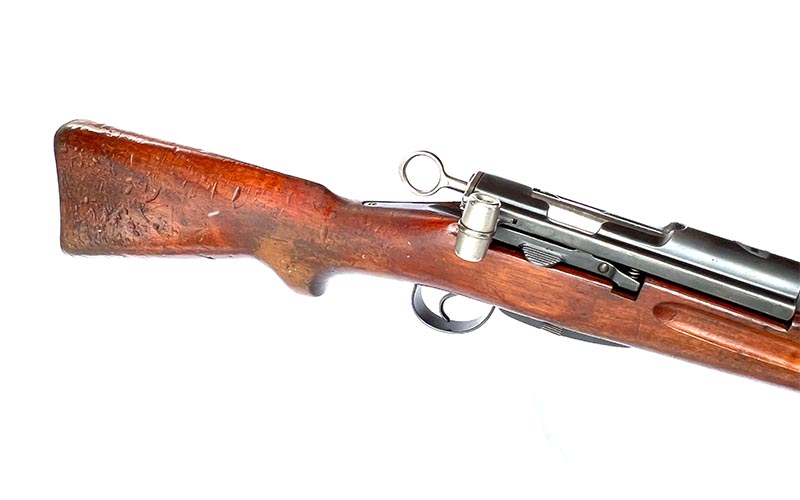
Collecting The K31 Today
The good ol’ days of cheap surplus rifles are long gone. The price of a K31 has doubled in the past 10 years, and in some cases tripled. The rifle in this article would sell for nearly $1,000 today. That puts it in the same cost range as shooter-grade M1 rifles, but with much harder to source ammo and parts. The quality of the rifle featured here is almost as good as it gets. It’s difficult to find any K31 that’s in pristine condition below the trigger; the stocks on these guns are oftentimes very chewed up from being stacked at camp or from exposure to the weather. Say what you will about Swiss militarism, but they certainly did use their guns, even if they weren’t firing them at enemy soldiers.
As a result of this treatment, most K31s have pristine actions in excellent barrels with gnarly stocks. Many people tend to sand down and refinish these blemished areas, and you can often tell because the stocks are significantly narrower toward the buttplate and comb. I haven’t noticed a significant difference in the sale price of these guns with wood restoration. Most people don’t seem to care if the stocks have been tended to.

That said, you shouldn’t consider overpaying simply if the stock looks cleaner than the next one. At this point in the game, there isn’t a significant difference in cost between wood types—you may fetch a slightly higher premium for walnut, but we’re not talking more than $100 or so.
The overall supply of these rifles on the market has started to dwindle. The last several gun shows I’ve attended only had a few—and they were criminally overpriced. Just 10 years ago the floor was flush with them. What’s remarkable about this is that there weren't many of these guns made to begin with. Only half a million were produced. A large amount of these still remain in Switzerland, along with a lion’s share of GP11 ammunition.
It’s unknown how many of these rifles exactly are in America today, but what’s incredible is that just 10 or 15 years ago these guns were selling for less than $300. These guns are sought after primarily by people who want to shoot military competition; once they have a good one, they tend to hold onto it.
Editor's Note: This article originally appeared in the May 2023 issue of Gun Digest the Magazine.
More Classic Military Guns:
- Why The Mauser C96 “Broomhandle” Still Looms Large
- Nagant Revolver: Unique Relic From Behind The Iron Curtain
- M1917 Enfield: The Unofficial U.S. Service Rifle
- Browning Automatic Rifle: The Gun That Changed the Infantry

Next Step: Get your FREE Printable Target Pack
Enhance your shooting precision with our 62 MOA Targets, perfect for rifles and handguns. Crafted in collaboration with Storm Tactical for accuracy and versatility.
Subscribe to the Gun Digest email newsletter and get your downloadable target pack sent straight to your inbox. Stay updated with the latest firearms info in the industry.

![Best Concealed Carry Guns In 2025 [Field Tested] Wilson Combat EDC X9S 1](https://gundigest.com/wp-content/uploads/Wilson-Combat-EDC-X9S-1-324x160.jpg)


![Best 9mm Carbine: Affordable PCCs [Tested] Ruger Carbine Shooting](https://gundigest.com/wp-content/uploads/Ruger-Carbine-Shooting-100x70.jpg)
![Best AR-15: Top Options Available Today [Field Tested] Harrington and Richardson PSA XM177E2 feature](https://gundigest.com/wp-content/uploads/Harrington-and-Richardson-PSA-XM177E2-feature-100x70.jpg)

“It’s too bad, however, that it was never used in its intended role”
What a weird thing to say about a nation’s military rifle. This whole article is written incredibly badly.
Not the best timing or article. The K-31 imports have been flooding the market for over a year now. I really don’t know where he’s been. Right now you can buy a number matching rifle for 400 and they are selling fast. The K-31 is making a comeback!!!
The only combat use of K31s was, ironically, with rifles made for civilian sporting use. In 1949, Hammerli sold about 100 of them to Israel (illegally, as Swiss law forbids export of weapons to nations that are at war), some with diopter sights and others with scopes, but otherwise identical to the Swiss Army pattern. They were completely unmarked other than serial numbers.
This article incorrectly states that the rifle has no positive extraction. It does cam when the bolt is pulled.
Perhaps a comparison of actions between the K31 & the Ross rifle in .303? Difficulties, lockup systems? The Ross rifle was touted as an especially accurate rifle too. It would also be interesting in outlining the K31’s replacement history in a brief followup story.
I love the 7.5×55 cartridge, recently I was given a 1911 long rifle made prior to the K1911 and since I have acquired a K1911 and a K31. I do disagree with the author that the Enfield is faster to cycle, I have 2 Enfield’s and for me the strait pull design edges out the Enfield. The Swiss have a long history of fine manufacturing and it is evident when you look at the craftsmanship of these fine rifles. I belong to a Swiss Rifle club currently and will attend more matches in the future.